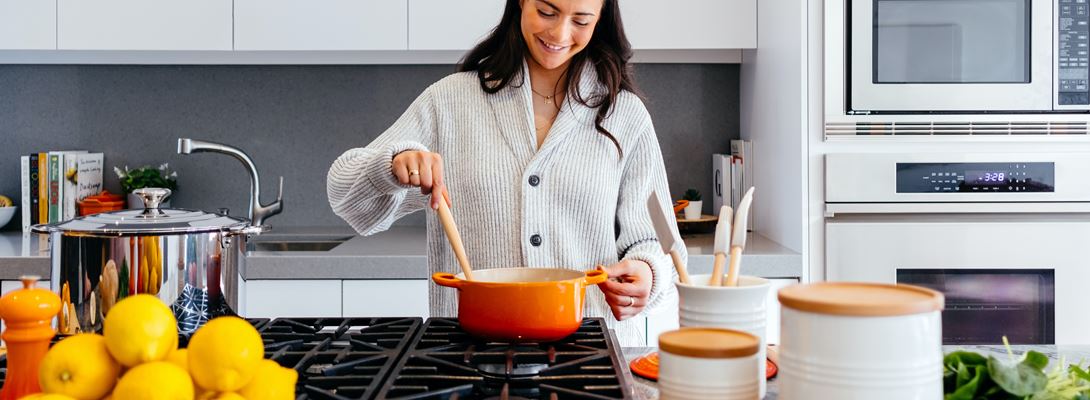A well-stocked kitchen is home to some of the most greedy electrical appliances, with your fridge and freezer eating up electricity 24 hours a day. When the time comes to buy a new appliance, make sure you read Which? reviews first. Their lab tests reveal the appliances that are great at their jobs and won't rack up your electricity bill either.
The way you use your kitchen appliances can also help you to save electricity. Follow our expert tips, honed through our years of experience, to cut your energy bills.
Make sure you're on the right tariff for your lifestyle.
Be energy efficient with your fridge and freezer
Don't leave the door open longer than necessary. Avoid putting warm food in your freezer as it makes it work harder - allow food to cool down first.
Defrost frozen food in your fridge. Frozen food will act like an ice pack to help cool the fridge, reducing the amount of electricity the fridge needs to use to keep cool.
Keep the inside of the fridge between 0 and 5°C, and use a fridge thermometer to check your thermostat is accurate. Lower temperatures decrease energy use, but if it’s too warm your food will spoil.
For optimum energy efficiency, aim to keep your fridge and freezer at least three quarters full. You could fill them with bottles of water to take up space. But don’t overfill - fridges and freezers work by circulating air around the compartments. If they're too full, air won’t be able to circulate, and the appliance will use more energy to keep cold.
Your fridge and freezer run most efficiently when they're defrosted regularly. Also, use a vacuum cleaner to clean the condenser coils at the back or underneath your fridge or freezer, as thick dust can reduce their efficiency by up to 25%.
Saving energy on cleaning and washing
Always fully load your washing machine, tumble dryer, washer-dryer or dishwasher. The fuller the load, the more energy-efficient the cycle.
Look for, and use, eco cycles on your domestic appliances. Most modern washing machines and dishwashers have them, and they're designed to cut electricity and water use.Dishwasher eco programs cut energy use by around 16%.
Wash lightly soiled clothes at 30°C, with the occasional higher-temperature wash for more heavily soiled clothing.
Time your washes carefully. If you're signed up to an energy tariff that offers cheaper off-peak electricity (Economy 12, for example), set your machine’s delay-start function to come on during the cheaper period.
Saving: Washing clothes at 30°C instead of 40°C can save you around £9 a year. Investing in an energy-efficient washing machine could save you a further £80 a year.
Save money and energy on tumble drying
Don't hang wet clothes on radiators to dry – use a clothes horse instead - or hang them outside if you can. If you need to use a tumble dryer, wring out or spin dry your clothes before putting them in.
Tumble drying uses a lot of energy, especially if your dryer is inefficient. One load in a C-rated electric tumble dryer costs around 49p, compared with around just 14p per load in an A-rated heat-pump dryer. Gas and heat-pump tumble dryers cost less to run, but they are expensive to buy.
Clean the lint filter every time you use the machine. A blocked filter stops the hot air from circulating freely, so clothes take longer to dry.
Saving: Instead of tumble drying every couple of days, drying naturally will save you about £23 annually, if your dryer is energy efficient, or up to £140 if your machine is relatively inefficient.
Energy-saving brews
Only fill and boil the kettle with as much water as you need. The most energy-saving kettles have a low minimum-fill line, and switch off swiftly after boiling.
Descale your kettle regularly. If it's full of limescale, you use more energy to boil the same amount of water.










